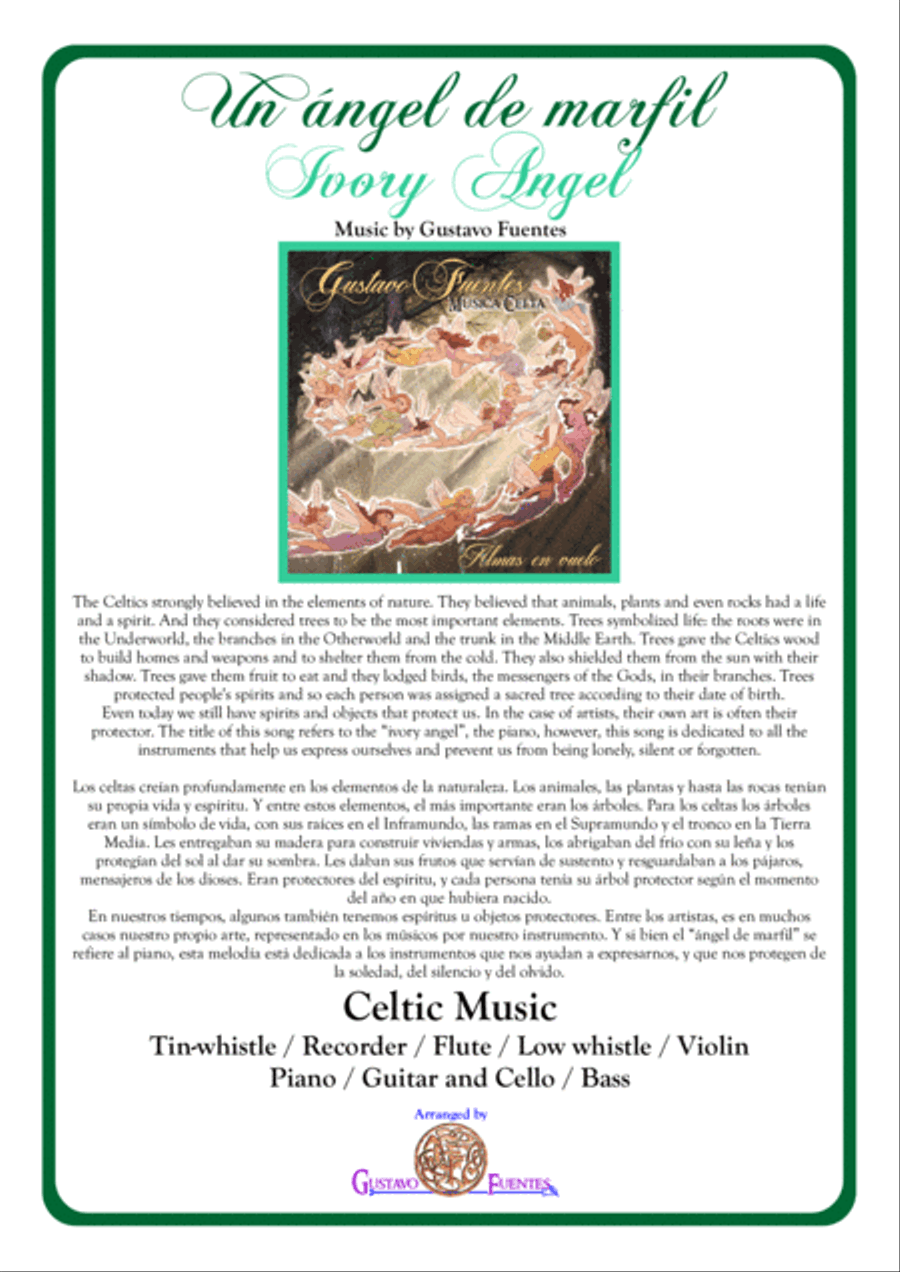Small Ensemble Cello,Flute,Soprano Recorder,Violin - Level 3 - Digital Download SKU: A0.900403 Composed by Gustavo Fuentes. Arranged by Gustavo Fuentes. Celtic,Folk,Holiday,New Age,World. Score and parts. 5 pages. Gustavo Fuentes #3637513. Published by Gustavo Fuentes (A0.900403). Ivory Angel. Celtic music song composed by Gustavo Fuentes, arranged for three voices. Two melody instruments, such as tin whistle, low whistle, flute, recorder, piano or violin, and low voice like cello or bass, with chords for piano or guitar. The audio is from to the Gustavo Fuentes CD Almas en vuelo that you can listen to on Spotify. The Celtics strongly believed in the elements of nature. They believed that animals, plants and even rocks had a life and a spirit. And they considered trees to be the most important elements. Trees symbolized life: the roots were in the Underworld, the branches in the Otherworld and the trunk in the Middle Earth. Trees gave the Celtics wood to build homes and weapons and to shelter them from the cold. They also shielded them from the sun with their shadow. Trees gave them fruit to eat and they lodged birds, the messengers of the Gods, in their branches. Trees protected people’s spirits and so each person was assigned a sacred tree according to their date of birth.Even today we still have spirits and objects that protect us. In the case of artists, their own art is often their protector. The title of this song refers to the ivory angel, the piano, however, this song is dedicated to all the instruments that help us express ourselves and prevent us from being lonely, silent or forgotten. Canción de música celta compuesta por Gustavo Fuentes, arreglada para tres voces. Dos agudas como tin-whistle, low whistle, flauta traversa, flauta dulce, piano o violÃn, y un instrumento grave como cello o bajo, con cifrado de acordes para piano o guitarra. El audio pertenece al CD de Gustavo Fuentes Almas en vuelo, que se puede escuchar completo en Spotify. Los celtas creÃan profundamente en los elementos de la naturaleza. Los animales, las plantas y hasta las rocas tenÃan su propia vida y espÃritu. Y entre estos elementos, el más importante eran los árboles. Para los celtas los árboles eran un sÃmbolo de vida, con sus raÃces en el Inframundo, las ramas en el Supramundo y el tronco en la Tierra Media. Les entregaban su madera para construir viviendas y armas, los abrigaban del frÃo con su leña y los protegÃan del sol al dar su sombra. Les daban sus frutos que servÃan de sustento y resguardaban a los pájaros, mensajeros de los dioses. Eran protectores del espÃritu, y cada persona tenÃa su árbol protector según el momento del año en que hubiera nacido.En nuestros tiempos, algunos también tenemos espÃritus u objetos protectores. Entre los artistas, es en muchos casos nuestro propio arte, representado en los músicos por nuestro instrumento. Y si bien el ángel de marfil se refiere al piano, esta melodÃa está dedicada a los instrumentos que nos ayudan a expresarnos, y que nos protegen de la soledad, del silencio y del olvido.
